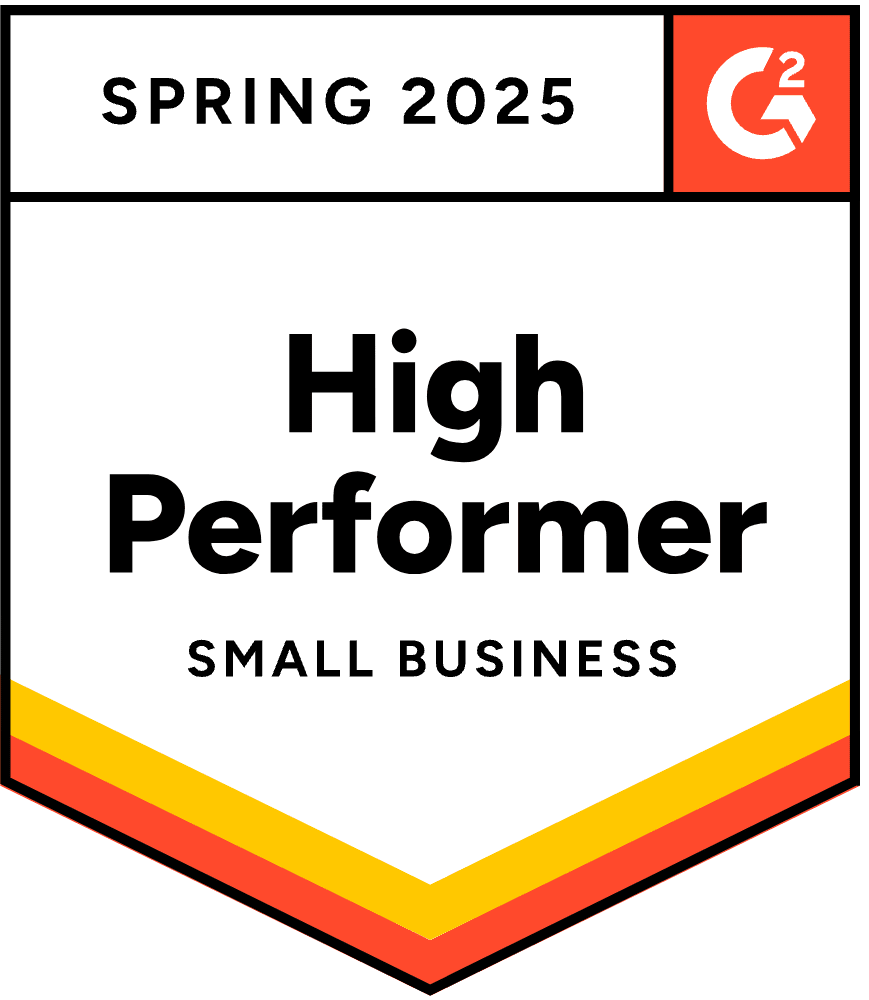- Blog
- What is a Popup? Everything You Need to Know
What is a Popup? Everything You Need to Know
-
Barbara Bartucz
- Conversion
- 6 min read
Table of Contents
Popups: You’ve heard the term, but what exactly are they?
If you’ve ever shopped online, chances are you’ve encountered a popup. For many users, popups can be a source of frustration or confusion, appearing unexpectedly and interrupting the flow of what they were doing.
However, when executed effectively, they’re not just digital distractions—they’re powerful tools for driving conversions.
In this article, we’ll break down what a popup is, why popups are important, and how you can use them to grow your business without making your website visitors roll their eyes.
Let’s get started!
What is a popup?
A popup is a small window or overlay that appears on a webpage to grab your attention with a specific message or offer. Think of it as the online equivalent of a helpful store clerk who reminds you about a great deal before you leave the shop.
Popups can appear in various forms, such as a full-screen popup, a slide-in box, or a lightbox popup, but they all have the same goal: to encourage the visitor to take a specific action, such as subscribing to an email list, as shown in the example below.
Popup or pop-up?
Both spellings are technically correct, but in the digital world, popup is more common. This trend is driven by tech culture, which favors simplicity (and dropping hyphens). So, whether you go for “popup” or “pop-up,” your readers will likely know what you mean!
What are the benefits of using popups?
If you’re wondering why website pop-ups are such a hit with marketers, the answer is simple: they work—and they work well.

- Second chance to convert: Pop-up windows act like your website’s backup plan. If a visitor is about to bounce, an exit-intent popup can remind them of a special offer, a discount, or even free shipping. This last-minute nudge can often turn lost opportunities into wins.
- Decreases distractions: Webpages are full of distractions—menus, links, and competing calls-to-action. A popup breaks through the noise, narrowing the visitor’s focus to a single, clear message. Whether it’s subscribing, claiming an offer, or answering a survey, popups simplify decision-making.
- Efficient list-building: Building email and SMS lists can be a slow process, but popups speed it up. When you offer something valuable—like a discount, free guide, or exclusive access—visitors are much more likely to share their contact information.
- Boosts lead generation: Popups are highly effective for lead generation. By offering attractive incentives, such as valuable resources or discounts in exchange for email subscriptions, popups help businesses achieve their marketing objectives by capturing visitor information.
- High return on investment (ROI): For such a simple tool, popups pack a punch. They’re affordable, easy to set up, and, when used strategically, deliver serious results. A well-designed popup at the right time can do more for your conversion rates than months of tinkering with other site elements.
Types of popups
Popups aren’t one-size-fits-all. They come in a variety of styles, each tailored to specific goals, making them a versatile tool for any website popup strategy.
Whether you’re trying to prevent a visitor from leaving or encourage them to take action, there’s a type of popup for every situation.
Here are the most popular types:
1. Exit-intent popups
Exit intent popups are activated when a visitor’s cursor moves toward the exit button, indicating they’re about to leave. An exit intent popup gives you a final opportunity to re-engage them with an offer, reminder, or even a freebie.
2. Welcome popups
First impressions matter. Welcome popups surface as soon as someone lands on your page, appearing suddenly to capture their attention.
Use a welcome popup to greet visitors, introduce your brand, or offer an incentive to explore further—like a discount or a lead magnet.
3. Email popups
Lead generation popups are essential for building your subscriber list.
They encourage visitors to provide their email addresses in exchange for something valuable, such as a special offer, free resource, or exclusive content.
By engaging users with these popups, you can effectively capture their interest and drive newsletter sign ups, motivating them to take action
4. SMS popups
SMS popups are the cousin of email popups. Instead of collecting email addresses, they capture phone numbers for text-based marketing campaigns. These popups work well for promotions and real-time notifications, such as flash sales
5. Survey popups
Want to know what’s on your visitors’ minds? Survey popups are perfect for gathering feedback. Use them to ask quick questions about the visitor’s experience, preferences, or product needs.
6. Product recommendation popups
These popups take personalization to the next level. Based on the visitor’s browsing behavior or purchase history, they suggest products that match their interests.
7. Gamification popups
Who doesn’t love a little fun? Gamification popups turn engagement into a game with elements like spin-the-wheel discounts or digital scratch-off cards. They’re interactive, exciting, and incredibly effective at driving conversions
The 3 principles behind high-converting popups
If you want popups that convert, there are three essential principles to keep in mind. Every popup should:
1. Fit within the context it appears
Timing and relevance are everything. A popup should feel like a natural part of the visitor’s experience, not a sudden interruption. This means aligning your message with the visitor’s behavior and where they are in their buying journey.
For example:
- On product pages, a “10% off if you subscribe” popup works well.
- On checkout pages, a free shipping offer can nudge visitors to complete their purchase.
This context-aware strategy ensures your popups feel helpful, not pushy, increasing the likelihood of conversion.
2. Contain a relevant message
A popup is only as effective as the message it delivers. Keep your copy laser-focused on what matters to the visitor at that moment. A generic “Subscribe to our newsletter!” isn’t likely to grab attention, but “Get exclusive deals straight to your inbox!” just might.
Relevance isn’t just about what you say—it’s about when you say it. Visitors browsing for winter coats aren’t interested in popups promoting summer sales. Show them content that matches their intent, and you’ll boost both engagement and conversions.
3. Be personalized for a defined segment of visitors
Not all visitors are the same, so your popups shouldn’t treat them as such. Personalization is the secret sauce of effective popups. Tailor your messages to specific groups, such as:
- New visitors: Offer a welcome discount to encourage their first purchase.
- Returning customers: Highlight loyalty rewards or personalized product recommendations.
- Cart abandoners: Send a reminder with an incentive, like a discount or free shipping, to win them back.
When your popups speak directly to a visitor’s needs, they’ll feel seen and valued, which makes them far more likely to convert.
9 best practices to create effective pop-ups
Popups can either boost conversions or drive visitors away—it all comes down to execution. Here’s how to create popups that get them right:
1. Find the right timing
Timing is everything. Effective popups that appear too early can feel pushy, while those that show up too late risk missing the moment.
Experiment with triggers, such as appearing after a certain scroll percentage, time spent on the page, or specific actions like moving toward the exit button.
The key is to catch users when they’re most likely to engage. OptiMonk offers various triggering options to ensure your popup appears at the right moment.
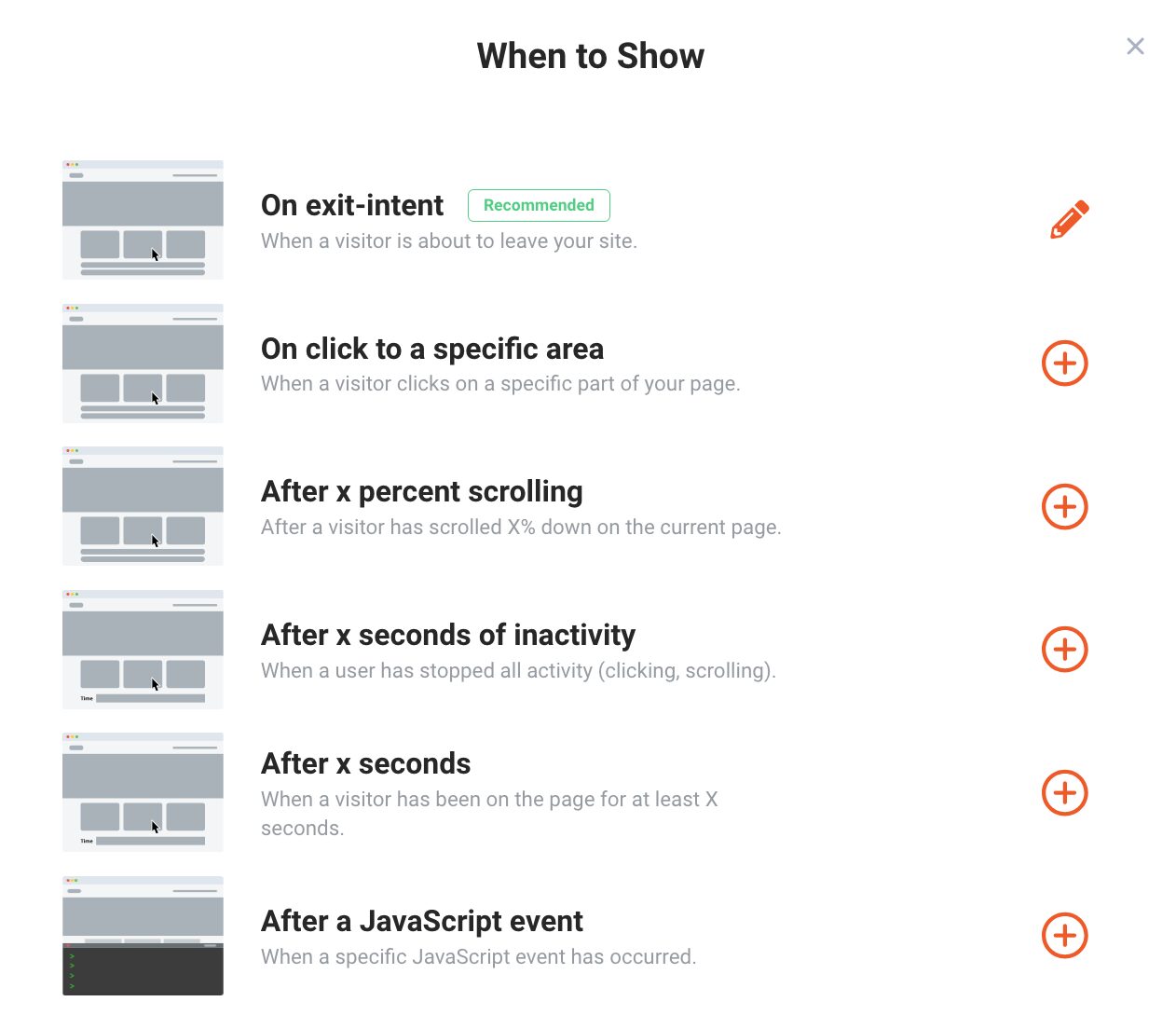
2. Limit frequency
Nobody likes being bombarded with website popups. Keep things visitor-friendly by showing only one popup per session or limiting how often a specific visitor sees the same popup.
Less is often more if you want to avoid a negative user experience.

3. A motivating value proposition
For a popup to work, it needs to offer something compelling. Whether it’s a discount, free shipping, a downloadable resource like a free ebook, or exclusive access, the value should feel meaningful to your audience.
Engaging users with a strong offer is key to capturing their interest and encouraging interaction.
Without a strong value proposition, most users will simply close the popup.
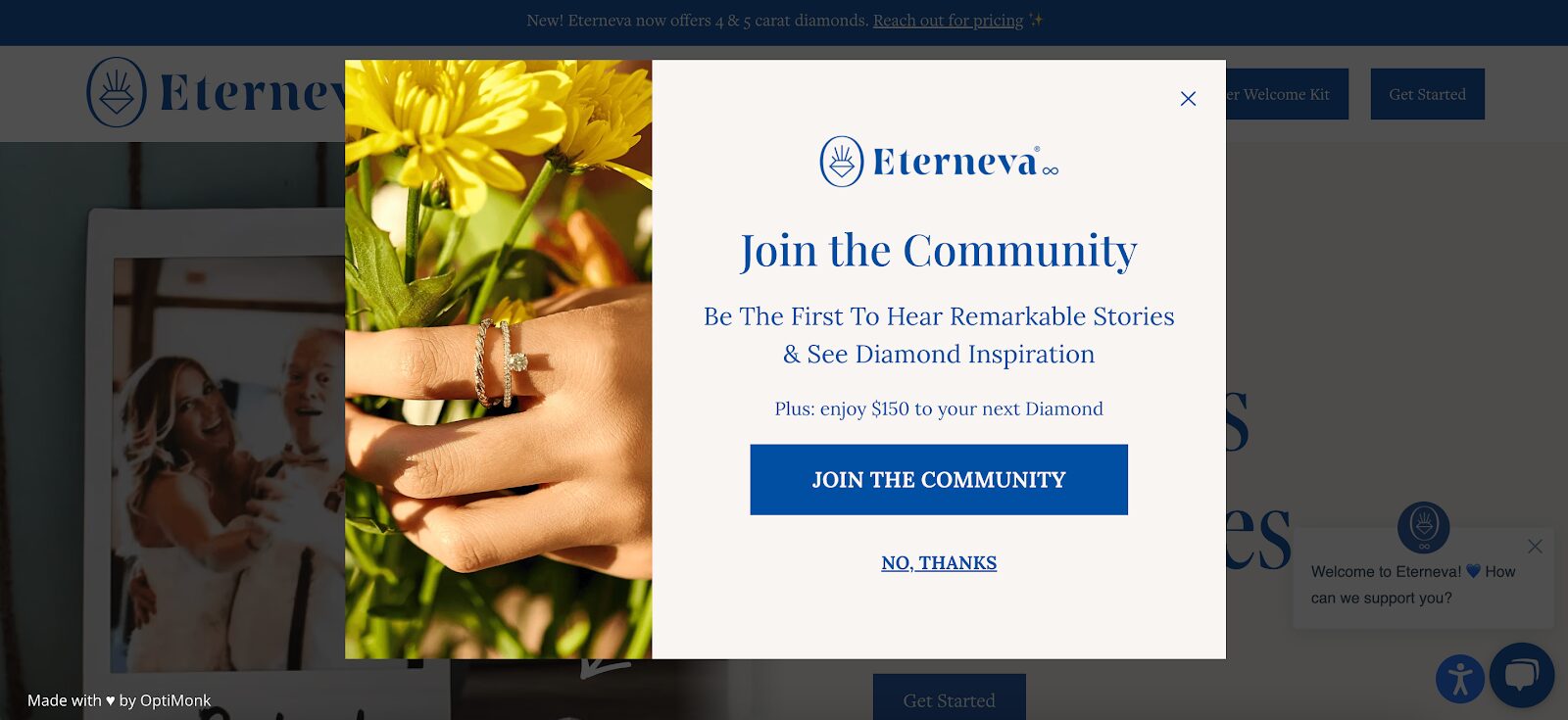
4. Clear message and call-to-action
A concise message paired with a bold, clear call to action (CTA) is your formula for success.
Phrases like “Claim My Discount” or “Get Free Shipping” are much more effective than generic CTAs like “Submit” or “Sign Up.”
Your popup should leave no ambiguity about what’s being offered and what actions visitors need to take.
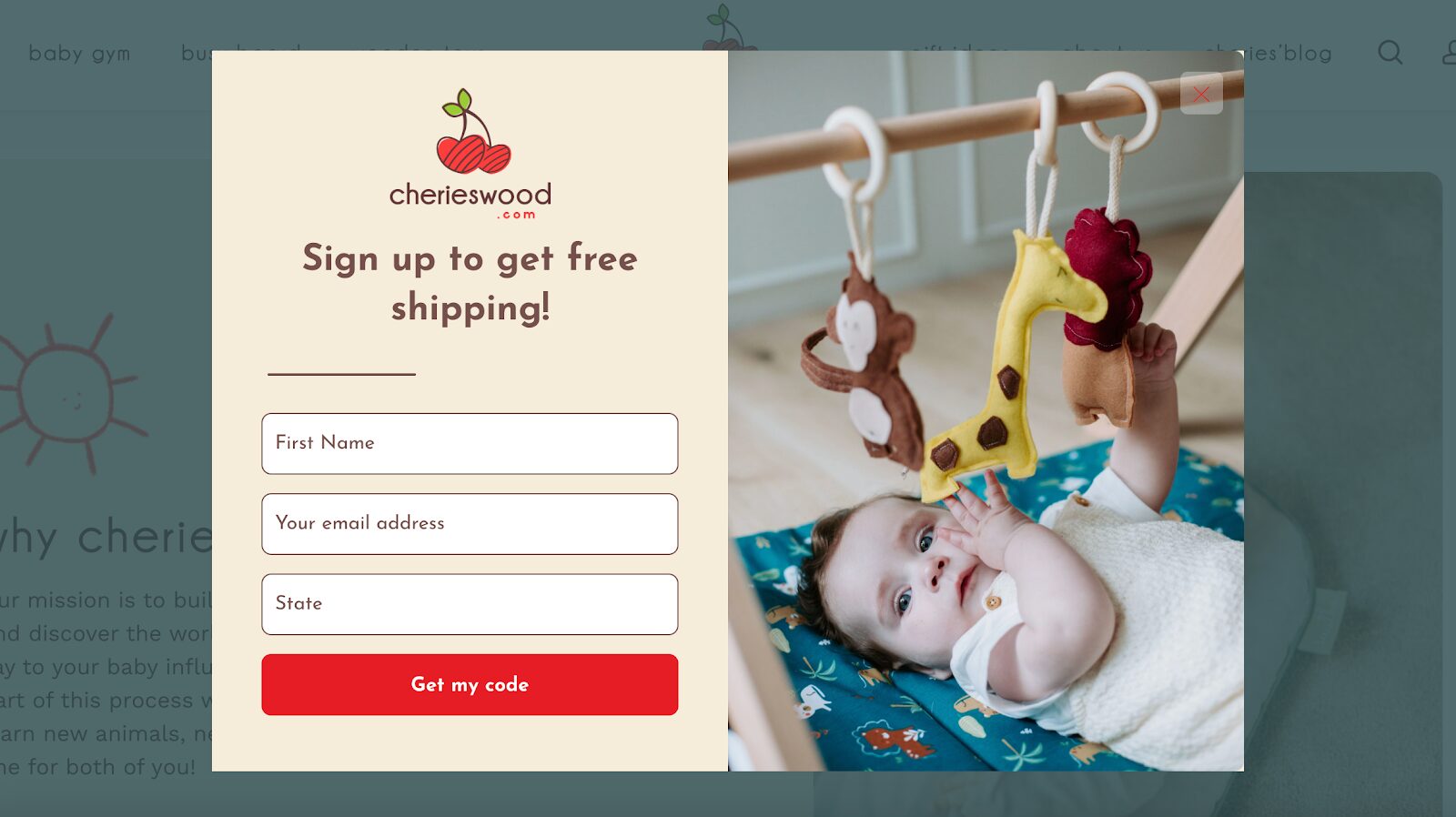
5. Handle objections and fears
Anticipate objections and address them upfront. If you’re asking for an email, reassure visitors about privacy—promise no spam or limited communication.
For online stores, adding testimonials, reviews, or guarantees directly on the popup can also reduce hesitation.
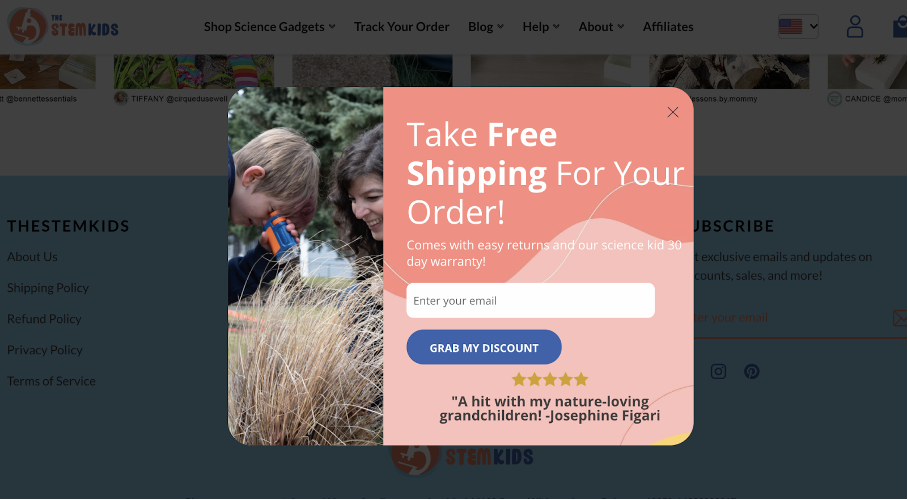
6. Increase FOMO (fear of missing out)
Urgency and scarcity are powerful motivators. Adding limited-time offers, low-stock notifications, or countdown timers can push users to act before they miss out.
For example, “Offer ends in 24 hours!” is much more effective than a generic discount.
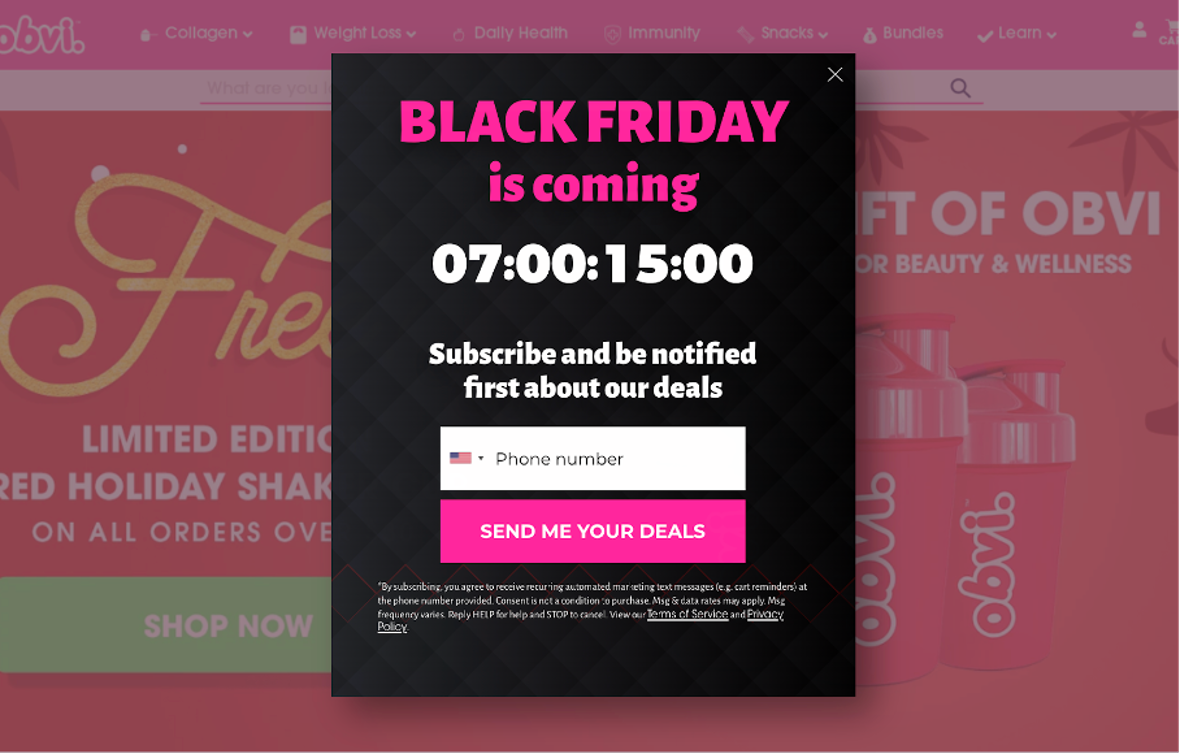
7. Targeted messaging
A one-size-fits-all popup isn’t ideal. Tailor your messages to different segments of visitors—new users, returning customers, or cart abandoners.
For instance, a first-time visitor might appreciate a welcome discount, while a repeat customer could respond to a loyalty reward.
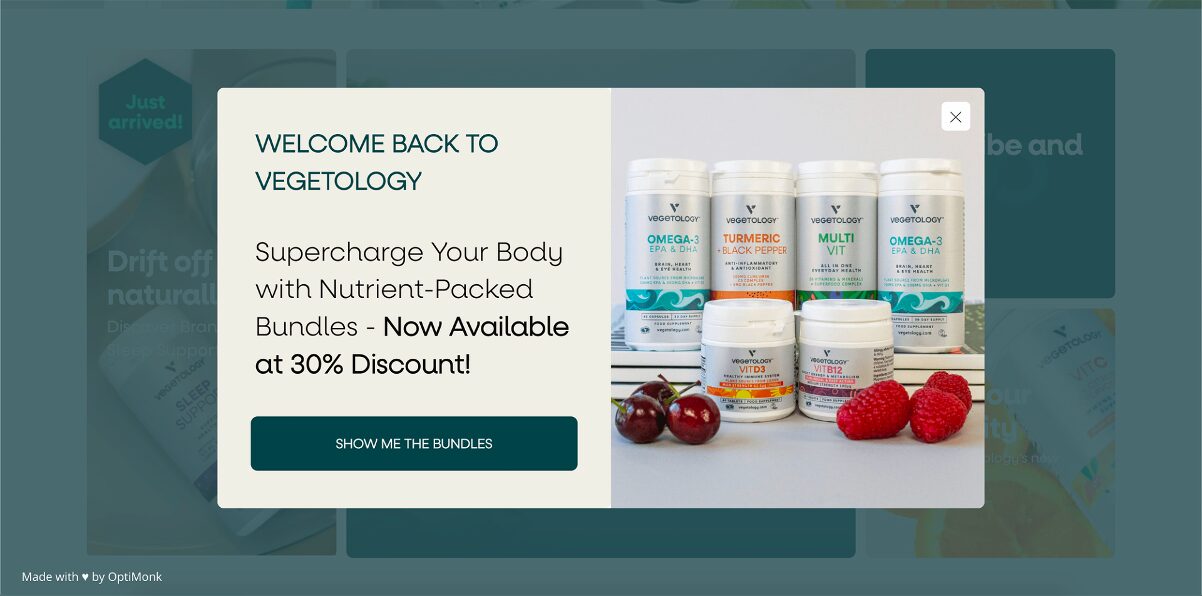
8. User-friendly design
Your main message should be on an eye-catching popup that stands out without being intrusive. Utilize clean, on-brand designs with legible text, ensuring the layout directs focus to the CTA.
A lightbox popup, for instance, can improve customer experience by appearing with a darkened background to capture attention.
Avoid overly cluttered or poorly designed popups, as they risk frustrating visitors and driving them away.
9. Easy close option
Never force interaction. Give users an easy and visible way to close the popup. Whether it’s a small “X” or a “No, thanks” button, respecting the visitor’s choice builds trust and reduces irritation.
How to launch your first pop-up window in just a few minutes?
Getting started with popups is easier than you think. With the right tools, you can have a high-converting popup live on your site in no time.
Here’s a quick step-by-step guide to get started with OptiMonk:
Step 1: Choose a template
Start by selecting a popup template that fits your goal.
Whether you’re building an email list, preventing cart abandonment, or promoting a special offer, tools like OptiMonk offer plenty of ready-to-use designs tailored for different purposes.
Step 2: Customize your popup
Make it your own. Edit the text, call-to-action (CTA), colors, and images to align with your branding. Keep the message clear, visually appealing, and relevant to your audience.
You can also consider using sidebar popups as a non-intrusive way to engage users with announcements or promotions.
With drag-and-drop editors, customization is quick and intuitive.
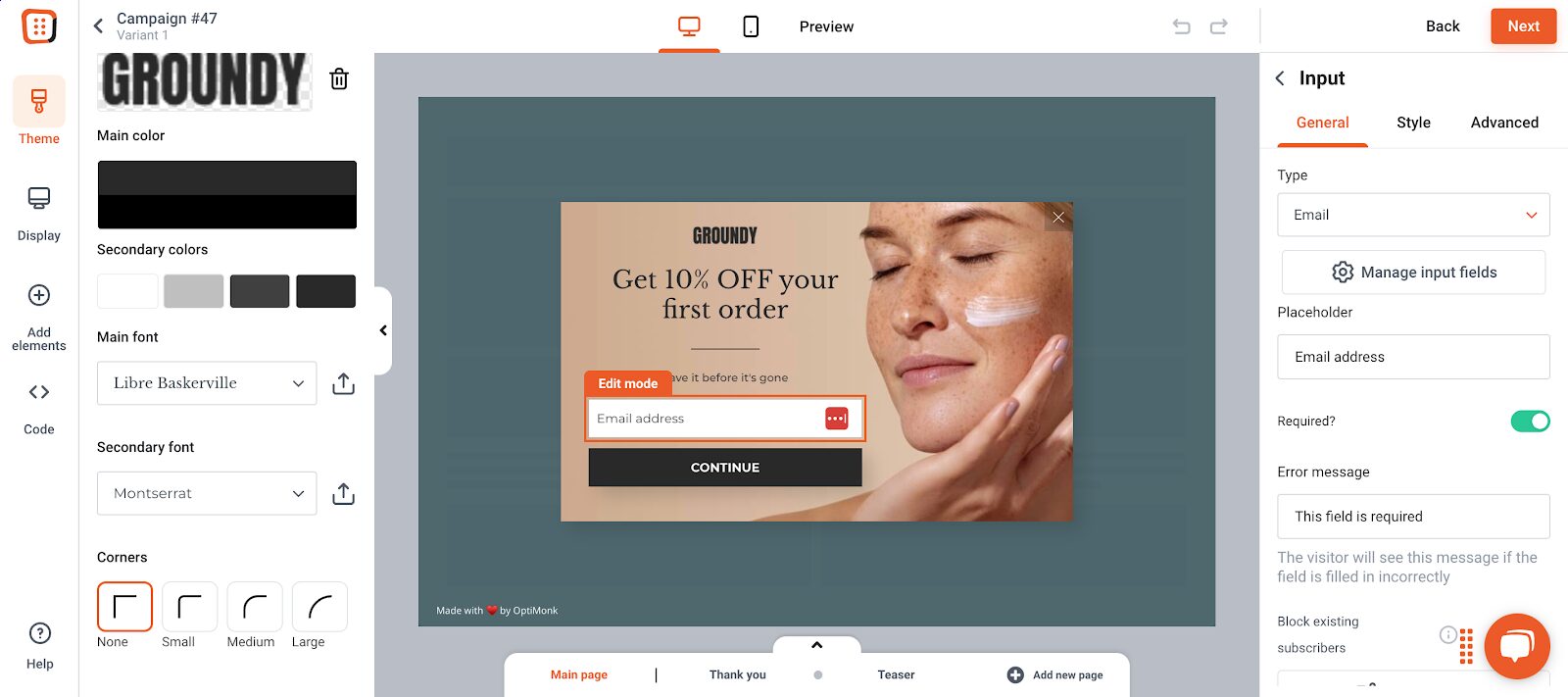
Step 3: Set up triggering and targeting rules
Decide when, where, and how your popup will appear. Do you want it to trigger on exit-intent, after a few seconds, or when the user scrolls halfway down the page?
A pop-up form can be triggered based on user behavior, providing a targeted approach to capture attention.
You can also target specific audiences, such as new visitors, returning customers, or those on mobile devices.
Step 4: Launch
Once you’re happy with the design and settings, hit “Publish” to go live. From there, you can monitor performance and tweak it as needed for optimal results.
Wrapping up
Popups are more than just attention-grabbing boxes—they’re powerful tools to engage visitors, boost conversions, and grow your lists.
By tailoring your popup strategy and following best practices, you can make them work for you without annoying your website visitors.
Ready to create your first popup? Give OptiMonk a try and see the impact it has on your site.
Your visitors—and your conversion rates—will thank you!
Migration has never been easier
We made switching a no-brainer with our free, white-glove onboarding service so you can get started in the blink of an eye.
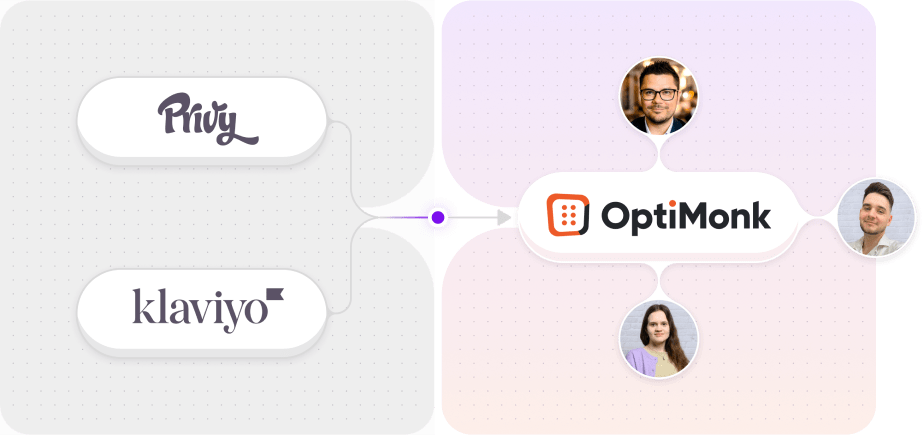
What should you do next?
Thanks for reading till the end. Here are 4 ways we can help you grow your business:
Boost conversions with proven use cases
Explore our Use Case Library, filled with actionable personalization examples and step-by-step guides to unlock your website's full potential. Check out Use Case Library
Create a free OptiMonk account
Create a free OptiMonk account and easily get started with popups and conversion rate optimization. Get OptiMonk free
Get advice from a CRO expert
Schedule a personalized discovery call with one of our experts to explore how OptiMonk can help you grow your business. Book a demo
Join our weekly newsletter
Real CRO insights & marketing tips. No fluff. Straight to your inbox. Subscribe now
Barbara Bartucz
- Posted in
- Conversion
Partner with us
- © OptiMonk. All rights reserved!
- Terms of Use
- Privacy Policy
- Cookie Policy
Product updates: January Release 2025

